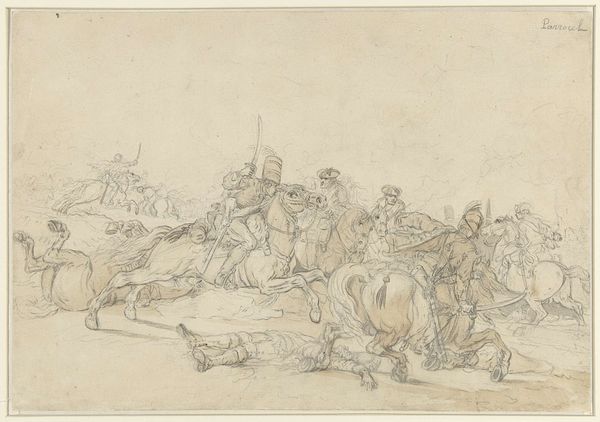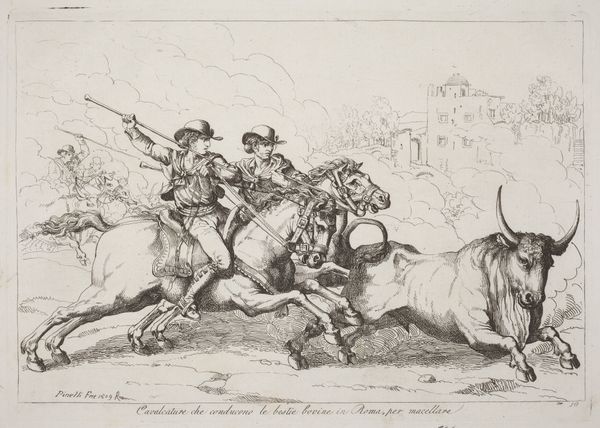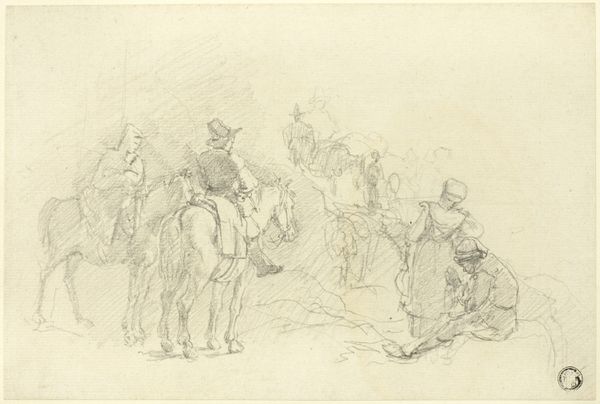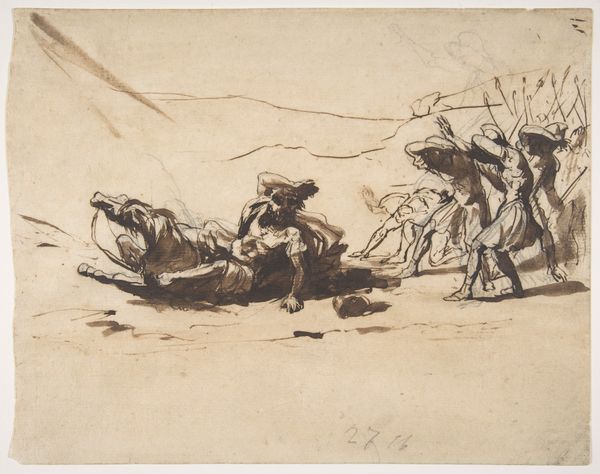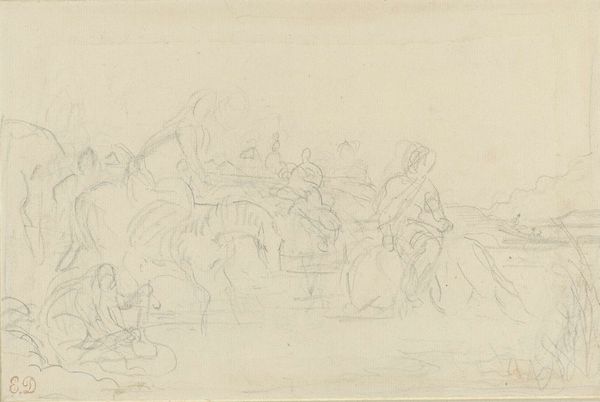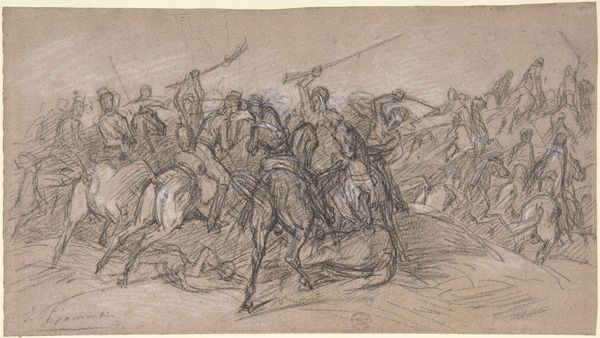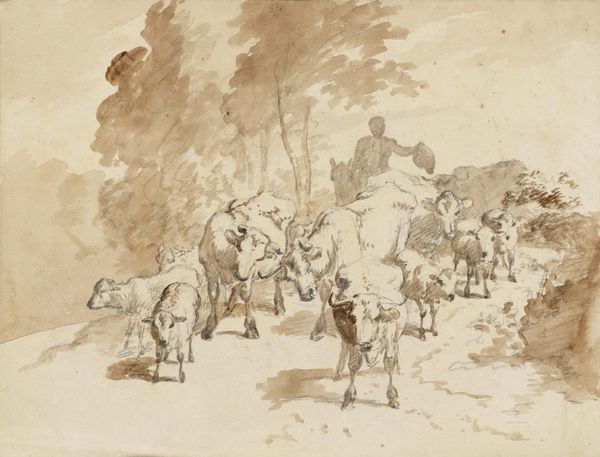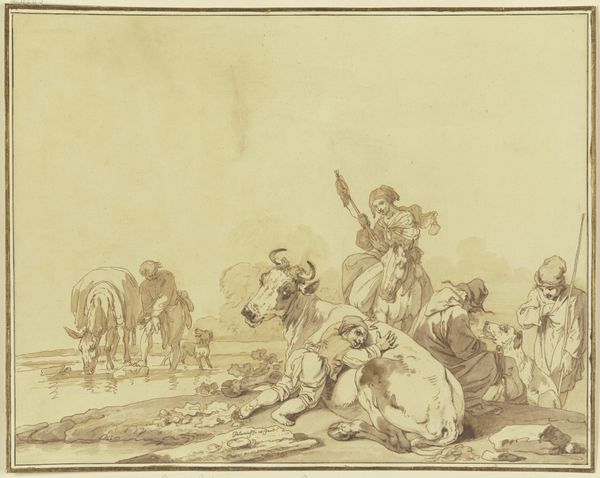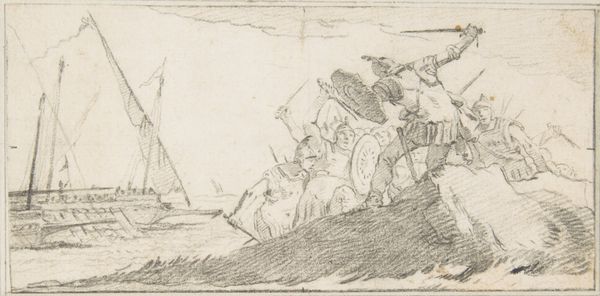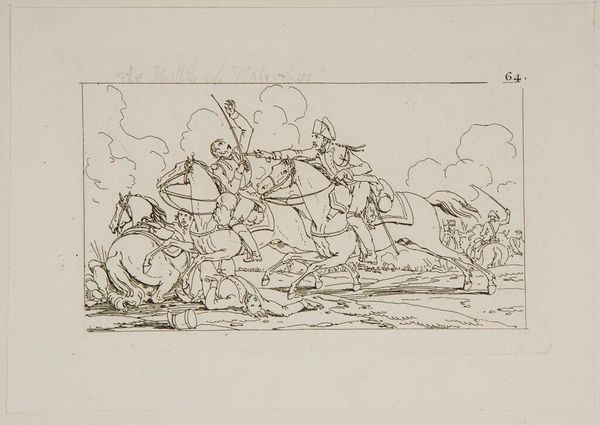
drawing, ink, pen
#
drawing
#
narrative-art
#
pen sketch
#
landscape
#
figuration
#
ink
#
ink drawing experimentation
#
romanticism
#
orientalism
#
pen
#
history-painting
Copyright: Public Domain: Artvee
Curator: We are looking at Théodore Géricault's "Combat of Oriental Horsemen," created circa 1822-1823, rendered in pen and ink. Editor: What immediately strikes me is the frenetic energy captured in this seemingly simple pen sketch. The dynamism! Curator: Absolutely, and let's consider the production of this drawing, a study in controlled chaos if you will. Pen and ink were readily available materials, indicative of Géricault's interest in readily available, almost quotidian artistic implements. Editor: It is more than just material, isn’t it? I am intrigued by the figures themselves. The sweeping curves of the scimitars, the turbans, the architectural detail suggesting an exotic locale - it points to a larger cultural fascination with the "Orient," loaded with symbolic and historical weight. Curator: Indeed. Consider Romanticism's broader interest in "the other," which, in visual terms, translated into a keen emphasis on landscapes populated by carefully chosen figures. In "Combat," the social backdrop—that building back there, what can we really tell about the means to build such thing? What about the process and cost behind such an orientalist projection? Editor: Well, what's behind it I see something about persistent cultural narratives about the East—images of conflict and exoticism circulating in Western imaginations that say less about an authentic portrayal of Eastern people and more about western notions of dominance and even desires. Curator: Right. But is there something inherent in the materials themselves— the rough texture of the paper perhaps, or the variable thickness of the ink lines —that contribute to the feeling of raw intensity. Were materials consumed at large quantities? What would be the carbon footprint of the orientalist "fantasies" during the romantic era? Editor: An important consideration! For me, though, the image still functions as a repository for deeply ingrained symbolic associations tied to power, identity, and cultural projection—visual language of colonialism taking root and influencing broader populations through this artwork. Curator: It brings interesting materialist considerations. Editor: Precisely, and that interplay enriches our viewing experience.
Comments
No comments
Be the first to comment and join the conversation on the ultimate creative platform.
